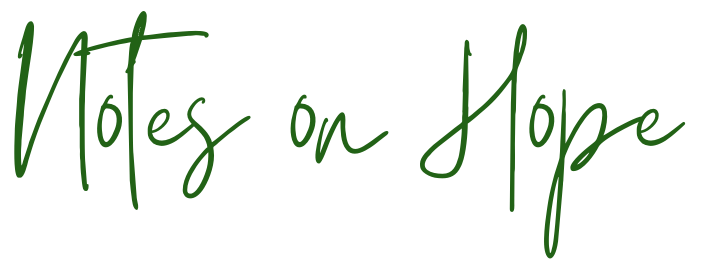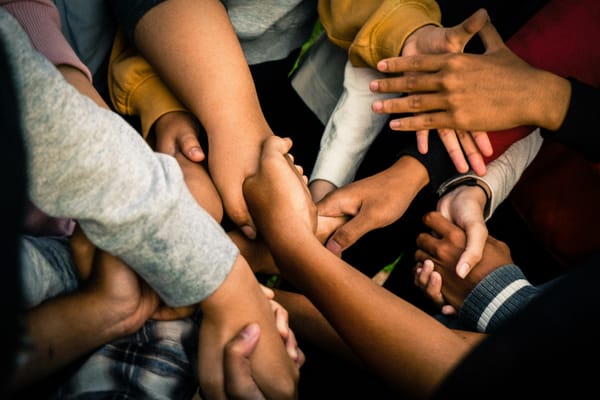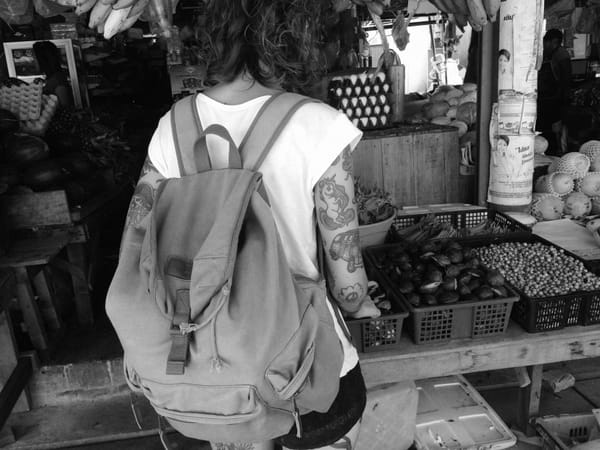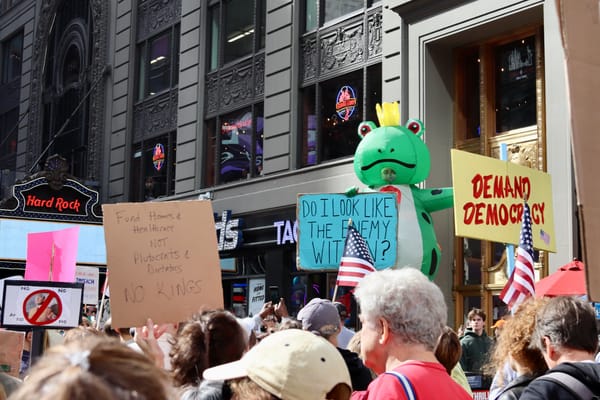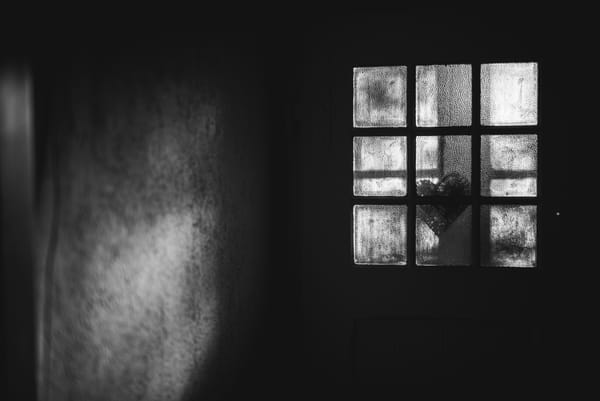Resisting Pessimism
On the precariousness of becoming adjusted to the dark

“The wrens build at dusk. Friends, I love their moss-dressed
nests twisting in the pitch of the rafters, for they have taught me
that the ruins of the dance are the dance.”
~Joseph Fasano
The week after the election, I wrote about avoiding despair, which can leave us paralyzed by an overpowering sense of hopelessness and fear. Now that we have gained a little distance from the most immediate and visceral emotions that arise in the heat of an event as it plays out before us—the time when we are standing at the scene of an accident bombarded by sirens and lights—there is a different set of emotional and behavioral responses that need to be named, understood, and managed. The emotions that surface as we experience events that feel violent or shocking are usually dramatic and demand urgent attention. They are also usually temporary. Over time these feelings morph into something quieter, but these softer undertones of feeling are equally if not more important to recognize and reckon with, because they are the simmering sensations that shape the majority of our actions and choices.
In the classroom with young children, teachers often refer to the initial extreme emotions that erupt in moments of intensity as “big feelings,” because children experience them as explosive and bigger than their small bodies and limited life experience can contain. These big feelings often manifest in equally explosive behaviors, whether throwing a toy or dropping to the floor in tears. Managing these big moments and helping children learn to regulate their feelings and actions when they are having an intense response is a significant occupation of life with young children.
Ultimately, though, I don’t think these intense reactions are the most challenging emotional impediments to learning and growth. With time, practice, and consistent guidance from caring adults, children develop the neurological and relational capacity to temper and move through their biggest reactions. Even children who struggle with more overpowering feelings and for whom self-regulation is more challenging, due to temperament or developmental differences, do make progress, with adult support, at calming the instinct to either explode or collapse. But, beyond the realm of these “big feelings,” I worry more about children who exhibit an outlook that is less explosive and manifests instead as a constant subtle shadow or a low hum of awareness—feelings that are less marked by extremes like rage and grief and more by the quiet persistence of helplessness, worry, or lethargy. These persistent feelings have a lower frequency and might be better described as moods or dispositions. Though they may seem less threatening, they are often both harder to address and present a more pervasive impediment to growth. Big feelings can be seen, heard, and resolved. Simmering emotions that color one’s outlook and influence how every experience is metabolized often lurk unnoticed but impact every choice and mode of engagement.
As we move away from the election itself, there will surely be other moments ahead that will arouse the “big feelings” that surface when a situation feels like an emergency, and they will send us into fits of adrenaline fueled reactivity. These big responses, it should be noted, are not always problematic. There are events that warrant adrenaline, because true emergencies require the immediate, surging, active response that adrenaline fuels. But we will also need to sustain our engagement, motivation, and hope for the long haul, and in order to do that, we will need to become more adept at naming and managing, not only our biggest feelings, but also those more quiet and persistent moods or dispositions, which can easily entrench us in passivity as they bubble away. We will surely hear many reminders in the coming months and years that we are in a marathon, not a sprint. But I think the reality is more nuanced and blended. We will need to become adept at moving between short term surges of high intensity response to urgent threats and the slower, longer term work of holding ground and clearing a path forward.
Pessimism is, perhaps, the disposition that can most easily constrain our view and establish a spirit of immobility, so we will need to be on the look out for its clouding presence in our vision and our affect. Pessimism doesn’t have a consistent definition. It’s described as an anticipatory feeling in some sources and as a mental attitude in others. But a consistent finding in the research, regardless of how it is specifically defined, is that pessimism tends to lead to reduced resilience and a paralyzing sense of apathy. After all, if we expect the worst, why would we bother working toward better outcomes? As I’ve discussed before, I don’t think recognizing the dangers of despair and pessimism warrants an abandonment of realism or an embrace of what Hannah Arendt called, “reckless optimism.” We can approach the world with clear eyes, while also recognizing that good does often prevail, through the tenacious and steadfast efforts that spring from the hearts of those determined to hold onto hope and work toward its realization.

The central distinction, I think, between sinking into pessimism and inaction or committing to hope and to working for the possibility of a better future lies in how we interpret and manage uncertainty. A week after the election, I read an opinion essay by Adam Grant in which he argues for the importance of recognizing that we don’t know what the future holds. Though I sometimes find Grant’s pragmatic insights useful, I found this particular essay’s stance on uncertainty problematic, because his formulation of uncertainty seems to lead, perhaps unintentionally, to a position of acceptance and passivity. He argues that we often act based on a misplaced sense of certainty that what we are working toward will be inherently good, but history shows that the trail of unintended consequences often proves us wrong. He also notes that we can take comfort in knowing that our most extreme emotions are not permanent and will give way quickly, as we adapt to new circumstances.
While I fundamentally agree with the facts Grant presents about how little we can know of the future and about the power of time to temper or most overwhelming feelings, I found his use of these facts to elicit comfort disconcerting. His position seems to rely on our ability to adapt and become inured to troubling realities. This strikes me as a soothing perspective that only the most privileged and protected can afford to take. In contrast, I think it is our challenge and our obligation, as we move forward, to acknowledge uncertainty while simultaneously resisting the temptation to adapt. I don’t think Grant is intentionally arguing for a state of apathy or psychic numbing. However, apathy is often a natural consequence of accepting the unacceptable, as a means of staving off negative feelings and protecting ourselves, on an individual level, from fully recognizing the danger others may be in or the suffering they are enduring. This is something we will need to guard against, even as the most overpowering emotions of immediacy fade.
By contrast, the statistician, David Spiegelhalter, takes the same premise of acknowledging uncertainty, but he argues for an embrace of uncertainty that is more active and rooted in resistance to the passivity that fear can provoke. He explains that, when we reframe uncertainty by considering the possibility it leaves open for good outcomes rather than fixating on personal risks, it can actually make us more courageous and more capable of living actively in the present, instead of becoming resigned to helplessness or self-protection. Rather than allowing uncertainty to lead us to accept and adapt to the present, he suggests that uncertainty can propel us forward, if we view it in the light of possibility.
This refusal to adapt or adjust to the current reality invokes a concept that Dr. Martin Luther King Jr. referred to as, “creative maladjustment,” and it requires an intentional departure from some of the most basic and traditional understandings of mental health toward an understanding that is rooted, as psychologists Aerielle Allen and Colin Leach describe, “in the ethical value of a sustained discontent that illuminates truth and animates opposition.”
“Modern psychology has a word that is probably used more than any other word in psychology. It is the word ‘maladjusted.’ It is the ringing cry of modern child psychology, maladjusted. Now of course we all want to live a well-adjusted life in order to avoid neurotic and schizophrenic personalities…But there are some things in our society and some things in our world to which I am proud to be maladjusted, and I call upon all men of good will to be maladjusted to these things until the good societies realize. I must honestly say to you that I never intend to adjust myself to racial segregation and discrimination. I never intend to adjust myself to religious bigotry. I never intend to adjust myself to economic conditions that will take necessities from the many to give luxuries to the few and leave millions of God’s children smothering in an airtight cage of poverty in the midst of an affluent society.”
The educator Herbert Kohl expanded upon this idea in his reflection on teaching within inequitable systems. I think this is useful for those of us who are finding our way toward creative maladjustment in day-to-day life. He said,
“When it is impossible to remain in harmony with one’s environment without giving up deeply held moral values, creative maladjustment becomes a sane alternative to giving up altogether. Creative maladjustment consists of breaking social patterns that are morally reprehensible, taking conscious control of one’s place in the environment, and readjusting the world one lives in based on personal integrity and honesty—that is, it consists of learning to survive with minimal moral and personal compromise in a thoroughly compromised world and of not being afraid of planned and willed conflict, if necessary. It also means searching for ways of not being alone in a society where the mythology of individualism negates integrity and leads to isolation and self-mutilation. It means small everyday acts of maladjustment as well as occasional major reconstruction, and it requires will, determination, faith that people can be wonderful, conscious planning, and an unshakable sense of humor.
Creative maladjustment is reflective. It implies adapting your own particular maladjustment to the nature of the social systems that you find repressive. It also involves learning how other people are affected by those systems, how personal discontent can be appropriately turned into moral and political action, and how to speak out about the violence that thoughtless adjustment can cause or perpetuate.”
While Grant may be advocating for a psychologically validated understanding of healthy adjustment, I think this is perhaps our greatest risk, as we move from the volatile emotions of a crisis moment into the long road of ongoing work that lies ahead. If in this process of moving past shock or despondency we seek comfort in adjustment, we will likely find ourselves acquiescing to complacency, which, as Kohl describes, is its own form of violence.
Adjustment allows those with privilege and minimal risk of direct harm to tune out, and it often forces those who are more vulnerable to turn inward. We cannot afford either as we move forward. So, instead of seeking to numb overpowering feelings by finding consolation in the permission to adjust, and the pessimism and violence that go hand in hand with this kind of adjustment, let’s move into the year ahead committed to creative maladjustment—not to remain in a constant state of explosive feelings, but to refuse to become acclimated. Let us be on constant lookout for the moments that demand a surge of adrenaline fueled, urgent response, and for the periods of time that require more sustained and methodical fortitude. Let’s look to uncertainty, not as a justification for our inaction, but as a source of courage and a motivating force in our obligation to work against harm—harm to ourselves or to others—and to work toward the best possible future we can imagine. (If this all feels too dense and abstract to digest, go see Wicked. It makes the same point much more vibrantly, with singing, dancing, and special effects. The moral is, don’t accept the status quo of power in the name of comfort and security. Have the courage to get on the damn broom.)
As we move through this time of year, filled with reminders of the many ways to cultivate light in darkness, let’s also remember that our motivation to act is not only located in anger but also in shared joy. As Ros Gay reminds us, shared joy cultivates solidarity and serves as a “practice of survival.”
Resist the isolation that comes from locking doors in the name of community. Resist the pessimism and inaction that masquerade as adjustment, even (or especially) when these attitudes are presented as necessary to individual security and wellbeing over collective good. Seek shared joy. Seek the company of loved ones. Open your doors wide to invite others in and expand your circle of shared joy. And if you feel the tug of despair or pessimism that rears its head when it seems “impossible to remain in harmony with one’s environment,” choose hope instead, and ask yourself how you might become creatively maladjusted. Let’s ring in the New Year committed to finding courage, not complacency, in all that is uncertain.
Wishing you a new year filled with hope, tenacity, and a stubborn refusal to adjust,
Alicia
P.S. Thank you for reading and keeping hopeful company with me. I will be taking the next two weeks off from posting, but if you are new here, the full archive of past posts is freely accessible. Please explore!
As we head into the new year, if there are topics, questions, or challenges you would like me to examine in future notes, please don’t hesitate to let me know in the comments.
And, if Notes on Hope has been valuable to you, please consider sharing with others. Hope is easier to sustain when we are in it together.
